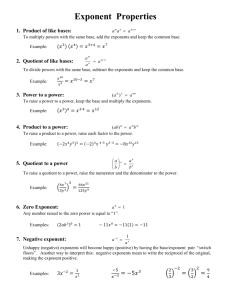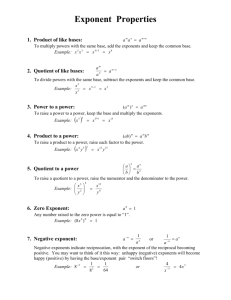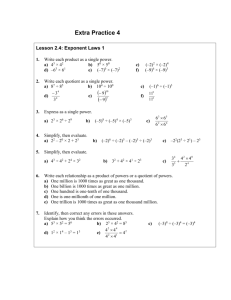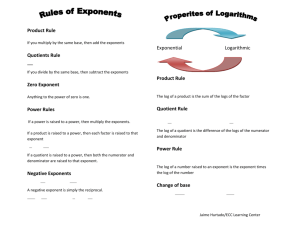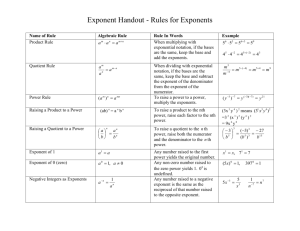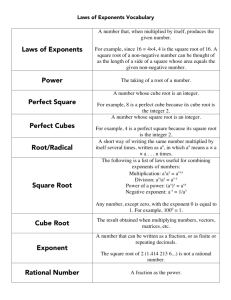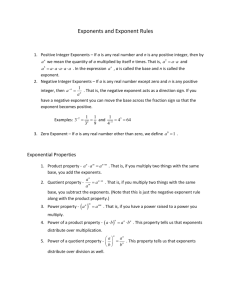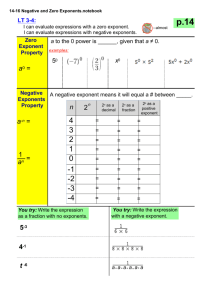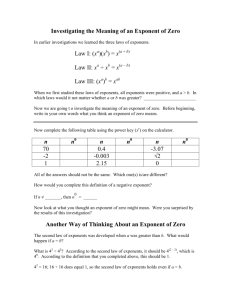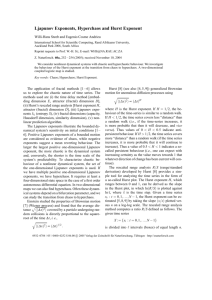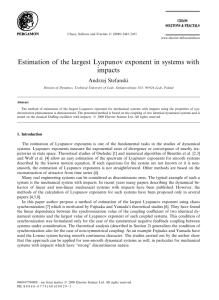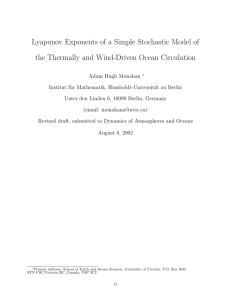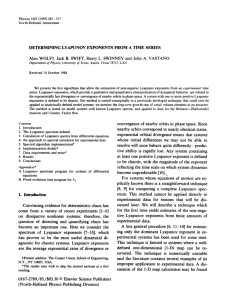11 Properties of Exponents
advertisement
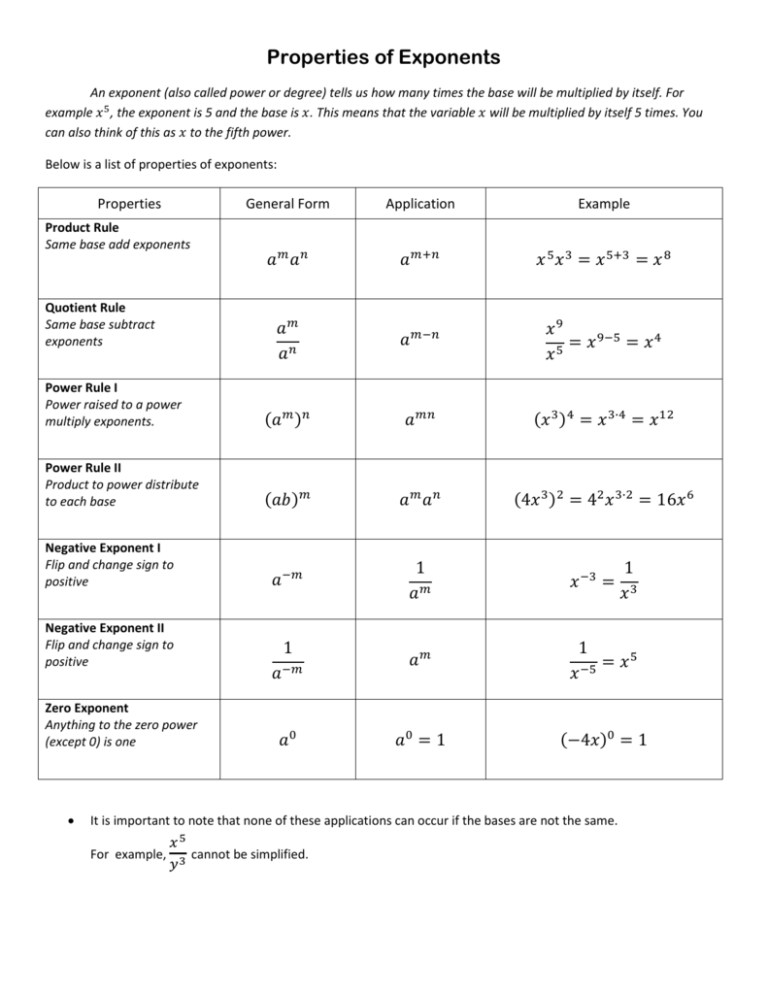
Properties of Exponents An exponent (also called power or degree) tells us how many times the base will be multiplied by itself. For example , the exponent is 5 and the base is . This means that the variable will be multiplied by itself 5 times. You can also think of this as to the fifth power. Below is a list of properties of exponents: Properties General Form Application Example Power Rule I Power raised to a power multiply exponents. Power Rule II Product to power distribute to each base Negative Exponent I Flip and change sign to positive Negative Exponent II Flip and change sign to positive Product Rule Same base add exponents Quotient Rule Same base subtract exponents Zero Exponent Anything to the zero power (except 0) is one • It is important to note that none of these applications can occur if the bases are not the same. For example, cannot be simplified. Using a Combination of Rules At one point, you may be asked to use a combination of these properties. Example: • • • ! " ! " ! # Quotient Rule ! " • $ % • $ % • # Power Rule # Negative Exponent " Example: • • • • '() * & + ( , '()( * ( + (( ' * ( +. ' *+. # Power Rule Note: When a base does not have an exponent there is really a one as the power. So that, - is understood as - # Negative Exponents


